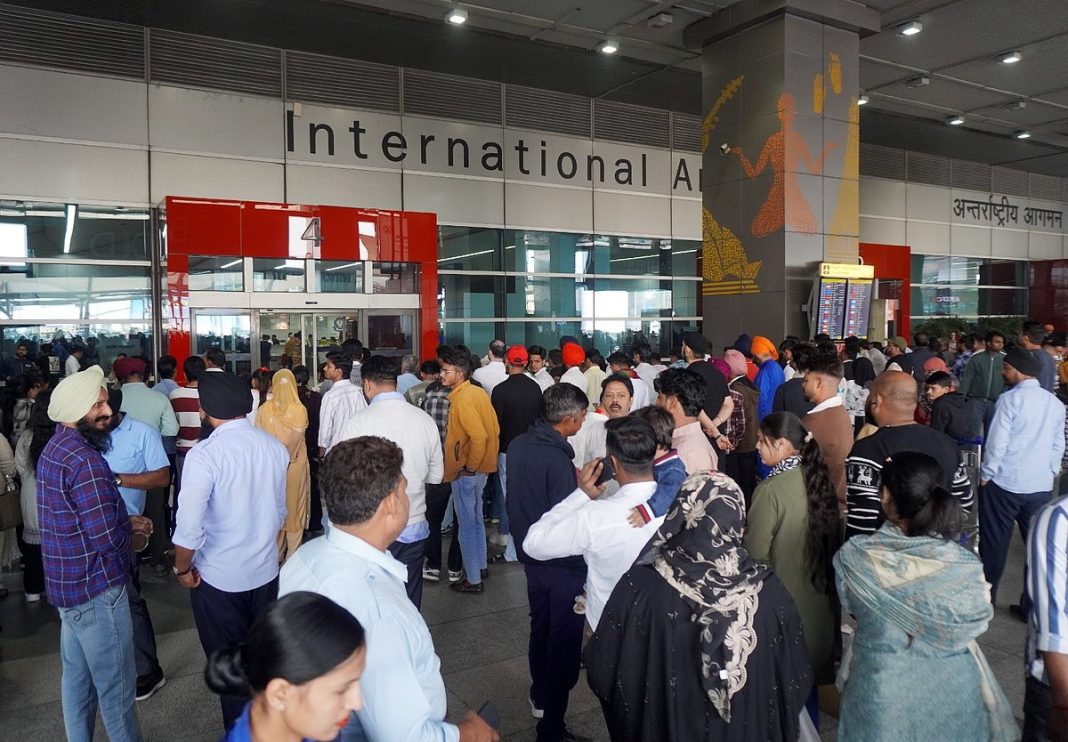Key Takeaways
- ATC Guild warned months ago about system performance issues at major airports
- November 7 system failure caused 300+ flight delays nationwide
- Failure occurred in critical AMSS platform at Delhi airport
- Controllers forced to switch to manual operations during peak hours
A major system failure at Delhi’s air traffic control on November 7 disrupted flights across India, validating warnings issued months earlier by air traffic controllers about performance degradation in key automation systems.
The Air Traffic Controllers’ Guild of India had cautioned aviation authorities about “performance degradation” in automation systems at high-traffic airports like Delhi and Mumbai, highlighting potential safety and efficiency issues.
System Failure Details
The glitch occurred in the Automatic Message Switching System (AMSS), a critical platform that integrates radar feeds, flight data, and communication between ATC units. The failure at Delhi’s Indira Gandhi International Airport forced controllers to switch to manual operations, triggering widespread delays and cancellations.
More than 300 flights were delayed nationwide, with Mumbai, Ahmedabad, and Patna airports reporting cascading effects.
Previous Warnings Ignored
In a July 2025 letter to Members of Parliament, the ATC Guild had raised concerns about recurring “system slowness and lag” compromising real-time flight data processing, particularly during peak hours. The Guild warned these issues could undermine operational safety and airspace management efficiency if unaddressed.
The Airports Authority of India confirmed the fault and restored the system. The DGCA and Ministry of Civil Aviation have sought a detailed report to determine the root cause.
Infrastructure Strain
Industry experts note India’s aviation infrastructure has seen rapid traffic growth without corresponding system upgrades. Delhi and Mumbai handle 60-70 aircraft movements hourly during peak periods, leaving minimal error margin when automation fails.
“When systems lag or fail, controllers face higher workload and reduced reaction time, which can impact safety margins,” an aviation operations analyst said.
System Resilience Concerns
The incident highlights India’s ATC system resilience issues. Aviation safety specialists argue automation platforms must support “graceful degradation” – continuing safe operation during partial failures. However, this episode revealed heavy dependence on a single automation node at Delhi, causing nationwide ripple effects.
The ATC Guild has reiterated its warnings were intended to prompt urgent upgrades, including new-generation automation tools, real-time data integration, and backup systems matching global benchmarks like those used by the US Federal Aviation Administration and EUROCONTROL.
Broader Implications
A senior aviation consultant told The New Indian Express the episode underscores deeper issues: aging infrastructure, limited redundancy, and delayed procurement and modernization.
“The failure also raises questions about whether the authorities acted swiftly on the Guild’s concerns flagged months in advance,” he said.
As operations normalize, regulators face pressure to ensure transparent investigation and accelerate air navigation system upgrades. Experts emphasize the need for continuous performance monitoring, real-time lag alerts, and faster fallback protocols.
The Delhi ATC incident serves as a critical wake-up call for India’s expanding aviation ecosystem. With traffic projected to grow significantly over the next decade, ensuring reliable, scalable, and fail-safe automation remains essential for maintaining safety and efficiency in Indian skies.




